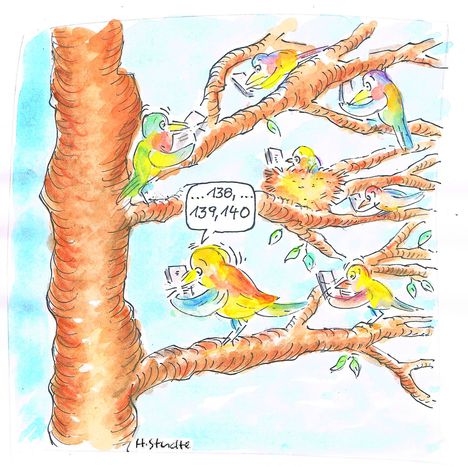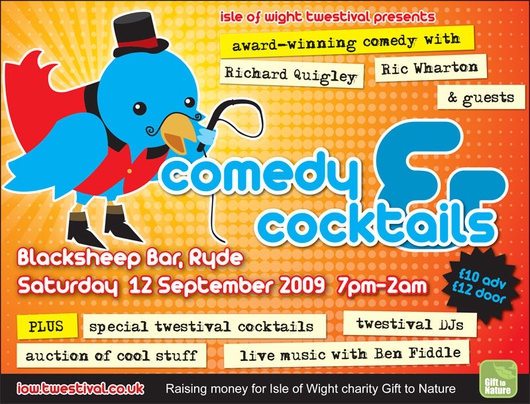
Guide to Twitter tongue
Published on
Translation by:
Nicola PotterTweet tweet. During both world wars carrier pigeons relayed short, sometimes vital messages, backwards and forwards when the electricity lines were out. Today, it’s Twitter’s 140 character posts which play the role of social network messenger…as long as you can master its language. So what are the basic ABCs of European Twitter?
For lots of people around the world, Twitter is a way of bypassing censored media, a source of information under our control. Thus, during its role in the Iranian demonstrations, Twitter was awarded first prize for freedom of expression by the index of censorship, a UK watchdog, in the 'new media' category.
European Twitter: humanitarian and fun
In Europe however, media censorship is (relatively) mild when compared with Iran. So why have Twitter’s tweets been so successful? In Britain, ‘tweets’ put out by stars - from singer Lily Allen to renowned figure Stephen Fry (who has 1, 412, 089 followers) – really mean something. The Celebritweets (celebrities who tweet), have undoubtedly contributed to making London the tweeting capital of Europe.
 The Twitter bird, launched by Jack Dorsey on 21 March 2006 in San Francisco, is clearly adapting itself well here in Europe. The 4, 500 tweets a day recorded in Paris in 2009 seem relatively few compared to the 17, 300 posted in London. 6, 300 were posted in Amsterdam and 6, 000 in Madrid. The Tweeters (people who tweet) are so enthusiastic that they got together on 12 February 2009 across 202 world cities, for local Twestivals which raised money for humanitarian organisations like concern. Twestivals have brought in more than £1.1 million over the last fourteen months. In short, Twitter knows how to talk to Europeans: parties and moral values are clearly a winning recipe.
The Twitter bird, launched by Jack Dorsey on 21 March 2006 in San Francisco, is clearly adapting itself well here in Europe. The 4, 500 tweets a day recorded in Paris in 2009 seem relatively few compared to the 17, 300 posted in London. 6, 300 were posted in Amsterdam and 6, 000 in Madrid. The Tweeters (people who tweet) are so enthusiastic that they got together on 12 February 2009 across 202 world cities, for local Twestivals which raised money for humanitarian organisations like concern. Twestivals have brought in more than £1.1 million over the last fourteen months. In short, Twitter knows how to talk to Europeans: parties and moral values are clearly a winning recipe.
Similarly, a Twestival took place in Paris on 25 March for the second edition of the Global Twestival. However, the French are often more adept at talking than acting. In the realm of Molière, who wouldn’t have survived in a world with 140 characters, the twitterowicz - as people who use Twitter in Poland are called - can inventweet new words to foster a cheeky ‘tweetionnaire’. It boils down to a question of common sense: only 140 characters are allowed, so surely it’s better to use short words if you want to express big ideas. So from now on we Tweetition (attend auditions to ‘dance the Tweet’) on Sundays. Others who are less reserved prefer to walk around naked sending Twitpics to their followers; they Nuvitwittent. Less obscure but more user friendly fans in Belgium have created twunches (a contraction of Twitter and lunch) where small committees unite ‘tweeters’ in real life.
Warning: neologism overload!
Not everything is necessarily twitterable (can be broadcast on Twitter). Due to the power of Twitter shitter (Twittering for the sake of it) you always risk ending up as a ‘twittwat’ (someone with no followers). A warning to political figures, the politweeters, who are making more and more use of their I-Phones to get close to their election base: twittować (written on Twitter in Polish) can improve their image as long as they don’t come across as an occasionitter (occasional Twitter user). Finally, for those of you who haven’t understood any of the newly forming language on this micro-blogging site, don’t panic! Besides the French version of a tweetionnaire, a Twictionary and/ or Twittionary are at the disposal of all you amateurs out there!
@hate neologisms? then sorry 4 u had 2 read this
Translated from Parlez-vous le « Twitter » ?



